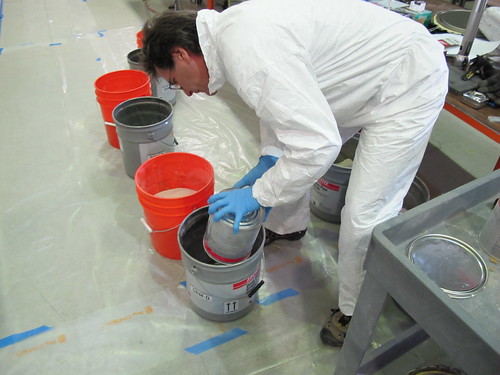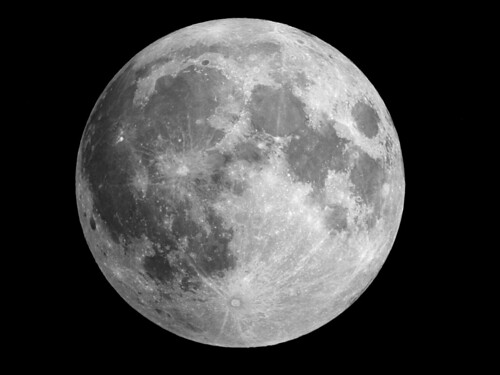So for my first post, I'm going to talk about grout.

Yes, grout.
Part of our research program involves the construction of a hypervelocity dust accelerator, which is a machine designed to accelerate very small dust grains to enormous speeds; up to 100 km/sec, or more than 200,000 miles per hour. Among other things, this will allow us to undertake experiments in the lab which model what's going on at the surface of the Moon.

Forget about the grout for a minute. This is the Moon.
Since there's dust around the Moon, and other places in the solar system, we can additionally use the accelerator to study how scientific instruments behave when dust particles are slamming into them. In fact, our group has many instruments under development which not only tolerate these impacts, but are designed to exploit them. Cleverly designed instruments can tell you not only where high-speed dust in space is coming from, but what it's composed of.
But before we can test these instruments, or undertake experiments, we have to build the accelerator. The machine works by first electrically charging dust particles, and then passing them through an enormous voltage difference, up to 3 million volts. The most important (or at least the most expensive) component of the machine is this high voltage source, which is custom-made for us, and has the size and weight of a small car. It's being delivered to our lab in mid-January 2011, so right now there's a mad scramble to get everything ready for it. The machine sits on rails, which need a nice, even, level surface to rest on.
The floor of our lab is not nice, even or level.

Concrete should not be going up and down like that
The level of the floor varies by as much as two inches over the length of the machine, in places by about an inch of height over a couple of feet. We had a couple of options, ranging from shimming the rails (finicky), grinding the concrete down (REALLY messy, and might damage the building), to pouring pads of a special self-leveling epoxy mixture called "deep-pour grout", which a month ago I had no idea existed. Things were slightly complicated by the fact that (1) we had two weeks to do the entire job before the fall AGU meeting, and (2) none of us had ever done this before. Neither of these can stop a good scientist.
The results are not pretty, but are on flickr for your amusement.
No comments:
Post a Comment